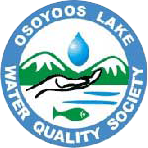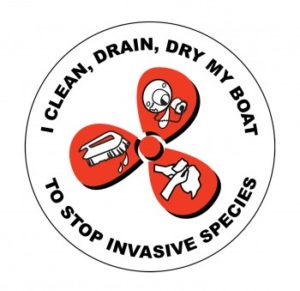Water Supply & Conservation

Late afternoon sun on the north end of Osoyoos Lake. Photo Credit: Neil Bousquet
Is there a problem?
Simply put, it’s about supply and demand for water.
In Osoyoos the terrain and climate are desert-like, with low precipitation and high summer temperatures, so most surface water quickly evaporates. The soil is sandy and does not retain water easily. Added to this is a constantly growing population and agricultural community with increased demand for water resources.
Fresh water is not an infinite resource. It needs be treated with respect.
Our water for domestic and agricultural use as well as drinking comes from Osoyoos Lake, the Okanagan River, and three surrounding aquifers (natural underground reservoirs). These water sources are replenished by general precipitation and by runoff from mountain snowpacks.
Geologically speaking, aquifers can vary in size and storage capacity with some only holding enough water for a few years’ supply and others holding much more.
However, it is not known how much water there is in the Osoyoos aquifers. Ongoing studies need to be conducted by all three levels of government to determine exactly how much water there is throughout the Okanagan Valley aquifers. Then municipalities can plan for the future.
Because there seems to be plenty of water in our lakes and rivers we tend to take water supply for granted, and in the Okanagan we use a lot of water.
Canada is blessed with an abundance of water when compared to other parts of the planet. Countries such as China, Australia, and even England talk about drought, hosepipe bans, dust bowls, water metering, diminishing water tables ….. many US states such as California and Florida have strict laws regarding water use due to an overall increase in population and agriculture and decrease in
What can I do?
- There’s a LOT you can do in your home, garden, and farm or orchard to conserve water. And it’ll save you money as well, in saved energy costs.
- Stop leaks – inspect taps and pipes inside and outside your home. A dripping faucet can use 10-12 gallons a day or 6,000 gallons a year!
- If you have an older home, install one of the new water-efficient toilets. Older toilets are the largest user of water in the house (up to 40%).
- Your washer is the next biggest user. Replace with a new energy and water efficient model. Do the same with your dishwasher.
- Don’t put the washing machine or dishwasher on unless you’ve got a full load. One full load uses less water than two half loads.
- Water your garden with a watering can. It uses 4 litres of water whereas a sprinkler uses 540 litres each hour!
- Are you watering the roadway? (This is actually illegal in some US states). Position your irrigation equipment carefully, both in the garden and the farm or orchard. Consider installing a shutoff valve that automatically detects rain.
- A water barrel in your garden can collect rainwater that you can use to water your lawn and borders.
- If you must use sprinklers, set them to turn on in the early hours of the morning, before sunrise. Using sprinklers during daylight hours, even on cloudy days, will result in up to 80% of the water being lost to evaporation. (Now that’s really a waste.)
- Water your garden once every 2-3 days, for about 20 minutes. This will give it a good soaking and is better than frequent, light sprinkling.
- Set your lawn mower on high to keep your grass height at about the second knuckle when measuring with a straight hand. This reduces evaporation of the ground surface and in appearance is the same as shorter grass.
- Drip irrigation is much more effective than overhead irrigation: again, much of the latter simply evaporates.
- Xeriscape your garden with drought-tolerant plants.
- If you shower instead of taking baths, you can save up to 400 litres of water per week. Install a low-flow showerhead.
- Keep a glass, bottle or jug of water in your fridge, rather than running your tap until it runs cool.
- Use the minimum amount of water required when you boil water in saucepans and kettles – this will save energy and water.
- Turn off the tap when cleaning your teeth, washing dishes etc.
- Don’t hose down your driveway. Use a broom instead (and get some exercise at the same time!)
- If you are concerned about water quantity and quality, now and in the future, make your voice heard.
One should always be aware of where our water comes from, where it is going, and how we are interacting with it in-between.






